
By Marisa Rothstein
Marisa Rothstein, an attorney and certified financial planner, is a Carolina Woman contributing editor.
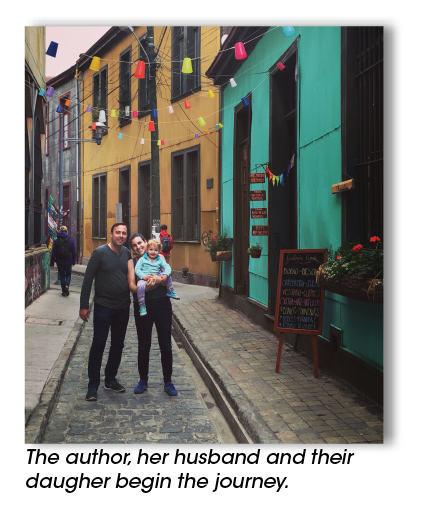 From the moment I was born - at exactly 12:01 a.m. on the due date – I've always done what was expected of me, exactly when it was expected. After high school, I went directly to college. After college, law school, where I met the man I would marry.
From the moment I was born - at exactly 12:01 a.m. on the due date – I've always done what was expected of me, exactly when it was expected. After high school, I went directly to college. After college, law school, where I met the man I would marry.
Nolan and I wed on a weekend and returned to work on Monday. One year later we had our daughter, Sydney, and started hunting for a home in a good school district. We were on our way to realizing the American dream. But something didn't feel right.
And then it hit me: The American dream was not necessarily my dream. Over a large pot of coffee, Nolan and I talked for hours about what we wanted for our lives together.
First, we longed to enjoy our new family, which our current jobs' demands had made nearly impossible. Second, we hoped to travel while still young and healthy. And then a crazy idea emerged: Quit our jobs and see the world.
But was it possible to trot the globe with a baby? And could we afford it? After months of researching to find answers, we ultimately decided that, although not easy, it was doable.
To fit a grand tour into our budget, we'd have to live with less before leaving, cram everything we wanted to see into five months, wander affordably, and return to the United States before Sydney turned 2, since bambinos fly free.
In March, with not much more than two backpacks and a stroller, we headed to the airport. The journey would take us from one family friendly, warm-weather destination to another every two weeks. The itinerary covered Argentina, Chile, Australia, Indonesia, Japan, Israel, Hungary, Croatia and Italy.
In this series of articles, I'll share stories from the road along with lessons learned along the way. If you're a seasoned traveler, I hope our adventure will bring back fond memories. If not, perhaps our tale will inspire you to one day become a Carolina Woman abroad.
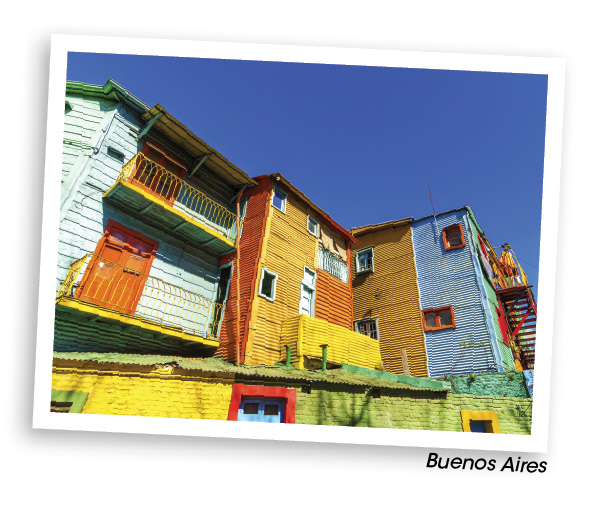 Buenos Aires, Argentina
Buenos Aires, Argentina
We began our jaunt in South America because, while still cold at home, it was mid-summer there. Buenos Aires enjoyed a reputation for being affordable, safe, and rich in culture and food. Also, we hoped that my Spanish proficiency would make it easier to navigate a new culture and adjust to our lives overseas.
Nolan, Sydney and I landed in Buenos Aires at 4:30 a.m., sleepwalked through customs, and took a taxi to the downtown apartment we had rented through Airbnb. The cab pulled in front of an apartment building just after 5 a.m.
The nearby bars were still bustling although the sun had risen. Upstairs, we collapsed into bed, falling asleep to the sound of raucous Argentines who seemed to have just gotten their fiesta started.
Around 11, we all lumbered out of bed and prepared for our first day exploring the sprawling city. We spent the first day strolling through the wide, leafy sidewalks of Recoleta, a ritzy neighborhood in the capital city.
Happy to be on her feet after so many hours on a plane, Sydney zigged to touch every tree and zagged to woof at every dog. Then she spotted a large clock sitting elegantly atop a golden pedestal on a street corner.
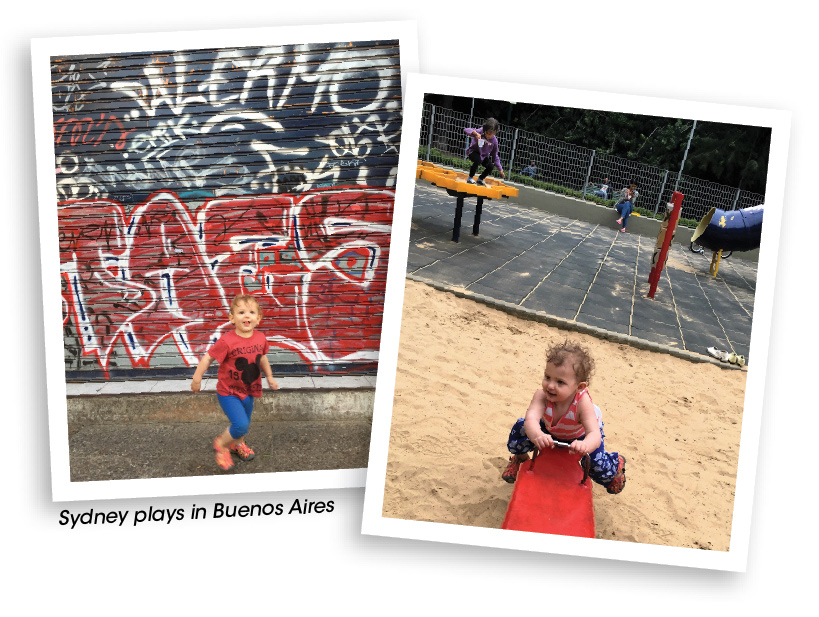 She sprinted to the timepiece, nearly tripping over a man strolling past us in the opposite direction. Before I could utter "lo siento" (I'm sorry), the man, in his mid-60s and dressed as though he may have been returning from Sunday mass, reached down and gently tussled her hair.
She sprinted to the timepiece, nearly tripping over a man strolling past us in the opposite direction. Before I could utter "lo siento" (I'm sorry), the man, in his mid-60s and dressed as though he may have been returning from Sunday mass, reached down and gently tussled her hair.
Another day, we meandered through the port neighborhood of San Telmo, where graceful 19th century, European-style buildings line narrow, cobblestone streets. Following scratchy music through the twisty lanes, we came upon a pair of tango dancers moving to songs from a vintage record player. As the dancers bowed, we dropped some pesos into their hat and walked away humming.
When we weren't getting to know Buenos Aires' neighborhoods, we were eating. Argentina is known for its beef for good reason: Indulging your greatest steak fantasy can be surprisingly inexpensive.
Still, our favorite meal wasn't served at a standard parilla (grill house), but at Mishigune, a modern Jewish restaurant that smelled like my grandmother's kitchen. To begin the meal, Nolan and I crunched on fresh Mediterranean salads while Sydney spooned warm hummus into her mouth. Silence fell as we tucked into the main course: homemade pastrami that fell to pieces at the touch of a fork and melted like butter in our mouths.
When Sydney started to cry, my husband and I looked at each other in panic: Would we be asked to leave before licking the gravy off the bottom of our plates? I started to eat quickly, glancing at the businesspeople trying to talk over the sound of our child's increasingly loud wails.
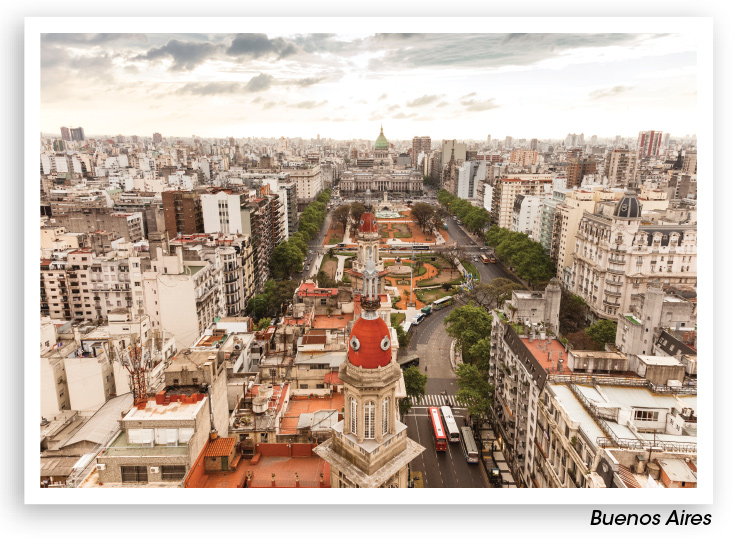 As I dangled a toy with one hand and shoved another forkful into my mouth with the other, the owner approached. Rather than asking us to quiet the tot, she handed her a cookie and bent down to make funny faces. The pastrami almost fell out of my mouth.
As I dangled a toy with one hand and shoved another forkful into my mouth with the other, the owner approached. Rather than asking us to quiet the tot, she handed her a cookie and bent down to make funny faces. The pastrami almost fell out of my mouth.
Although the kind proprietor saved the day, we realized that lunch out while Sydney naps in her stroller beside the table and dinner in was our best bet. Takeout from hole-in-the-wall spots turned out to be some of our most delicious meals, and cooking allowed us to live la vida loca.
On our last day in Buenos Aires, my daughter and I woke up around 7. Hoping to give Nolan a little extra sleep, I threw a sweater over her pajamas and we headed out. Walking to a nearby playground, we passed a small group of 20-somethings smoking cigarettes in front of a shuttered kiosk and a few sanitation workers sweeping up garbage. Otherwise, the neighborhood was quiet.
I pulled out my phone and reviewed the Google map to make sure we were headed toward the swings. As I slipped it back in my pocket and reached for Sydney's hand, I noticed a man approaching. "Buen dia," I said.
The man picked up the corner of his shirt. Pushed into the top of his pants was a black semi-automatic gun. He ordered me to put my bag on the ground. I was so flustered that I can't even remember if he was speaking in Spanish or English.
I answered, "In front of my baby? You're doing this in front of my baby?" I'm not sure how many times I repeated it.
Telling me to calm down, the robber demanded cash. I reached into my purse and pulled out all my pesos. As I handed over the bills, the man glimpsed my engagement ring and roughly motioned for it, too.
I considered explaining to the thief that, although irreplaceable to me, the ring wouldn't trade for much on the street. And then I looked down at Sydney, and a horrific scene flashed through my mind. I slid the ring off my finger and handed it over.
When the mugger asked for my cell, I pleaded, "Please don't take my phone. I need to call my husband. I need to call my husband. Please don't take my phone."
In a moment of uncharacteristic bravery, I picked Sydney up, turned, and walked quickly away. My tears started dropping on her head as I turned the key to our apartment door.
The crook stole my beloved ring and $60 and scared me to death. But we were unharmed. And I learned valuable lessons. My family and I are taking additional precautions, such as staying put when the streets are quiet; not wearing jewelry; limiting the use of iPhones while in public places; and stashing cash inside hidden money belts.
Rattled from the morning's terrifying experience, I was relieved when later that day my husband, my daughter and I boarded a plane out of the city.
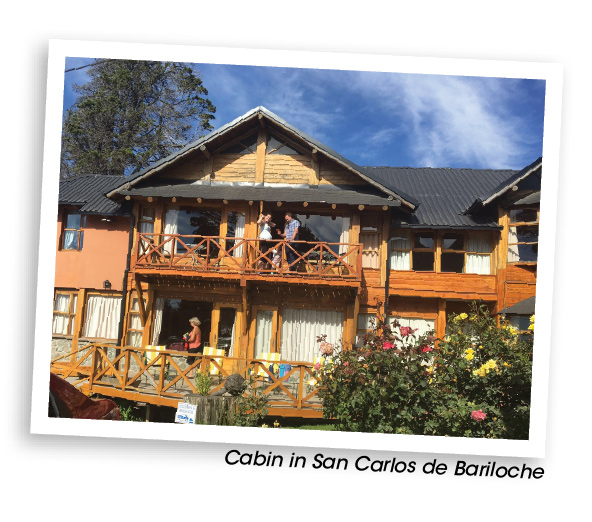 San Carlos de Bariloche, Argentina
San Carlos de Bariloche, Argentina
A three-hour flight south from Buenos Aires brought us to Patagonia, the southernmost section of South America. Shared by Argentina and Chile, the region is comprised of mountains, deserts, steppes, lakes and grasslands. It's a draw for travelers from around the world for outdoor activities from skiing to kayaking.
Our fun in Patagonia began in the small town of San Carlos de Bariloche, a skiing spot on the Argentine side. Since it was off-season, we were able to stay at a log-cabin hotel with sweeping views of the nearby lake.
On our second day in Bariloche, we decided to rent a car to explore the Seven Lakes Region, a network of mountains and lakes that makes up the Andes' southeastern foothills.
After paying the rental fee, we were walked to the parking lot and shown our options: two small clunkers, one in scratched-up red and the other in dust-covered white. Neither looked particularly capable of mountain climbing. We went for the white.
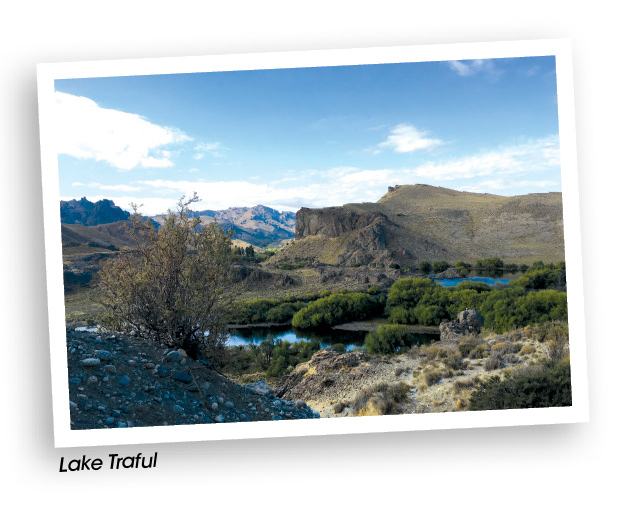 Our destination was Lake Traful, one of the region's most beautiful and isolated areas. The road north from Bariloche to Lake Traful offered uninterrupted vistas of an arid landscape. It was early autumn in southern Argentina and all the deciduous trees were leafless and the grass a light brown.
Our destination was Lake Traful, one of the region's most beautiful and isolated areas. The road north from Bariloche to Lake Traful offered uninterrupted vistas of an arid landscape. It was early autumn in southern Argentina and all the deciduous trees were leafless and the grass a light brown.
Eventually, we spotted a sign to the lake and turned on a road made of dirt and rocks, some large enough to rip open a tire on our low-lying jalopy. Sydney sang to hear her voice shake. Between the dust and rocks spit up by our little car that could, we savored views of boundless farms and rolling mountains.
About two hours later, after maneuvering past roaming cattle and stray dogs, we arrived at a lakeside restaurant. After a lunch of pollo a la plancha (grilled chicken), we set out on our hike, Sydney riding on Nolan's back.
At the top of the steep march, we were completely covered in dirt but enjoyed an incredible scene - lake, mountains, waterfall. Following a pair of honeymooning Argentines back down the hill, we loaded into our car for the long ride home.
On the other side of the mountain range, closer to the Andes, the lake region was lush and green. Cattle and sheep munched grass on the side of the road and tall, Lorax-style trees decorated the cliffs.
We spent the rest of the week in the crisp Patagonia air, climbing through waterfalls and picnicking alongside clear, calm lakes. Then, we repacked our bags for our next venture: a bus ride over the Andes Mountains into Chile.
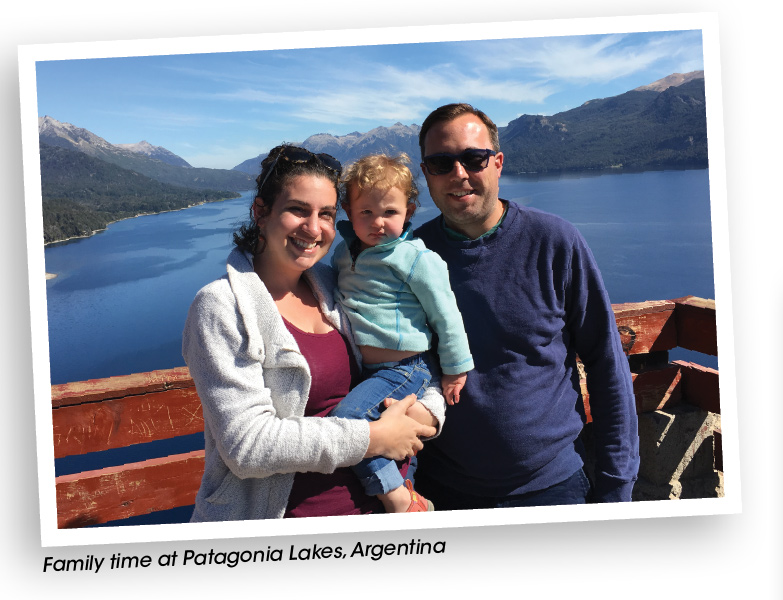
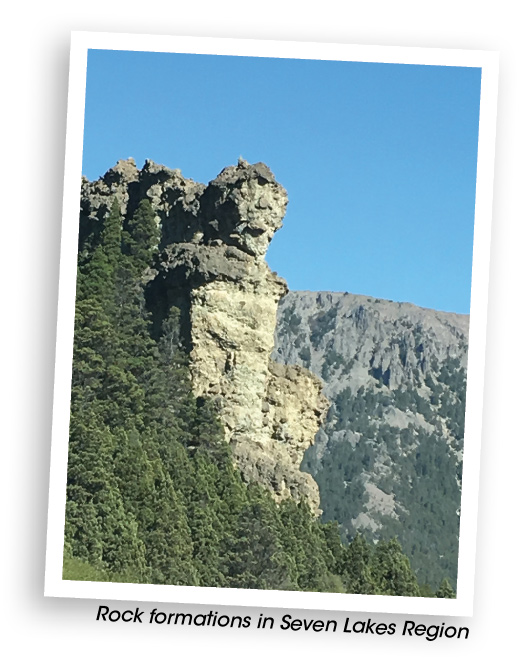
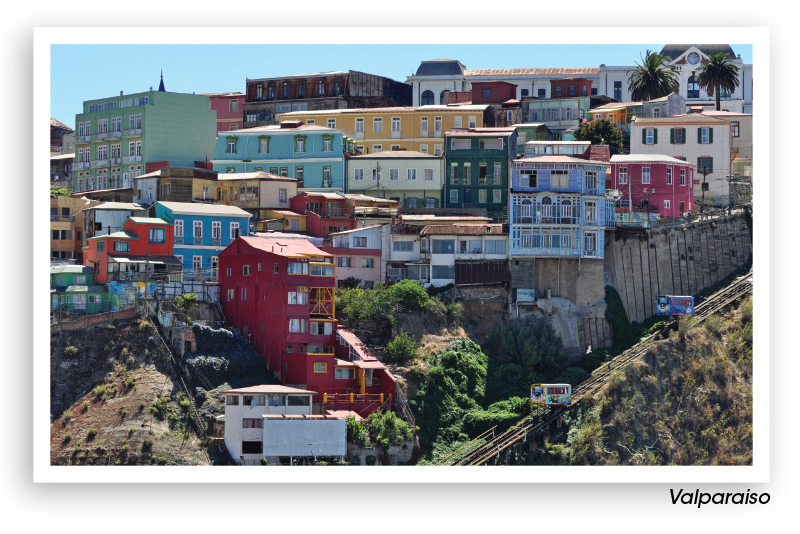
Valparaiso, Chile
We were sorry to say "adios" to Argentina, but excited to get lost in the streets of a new country, savor fresh flavors and meet up with Nolan's parents, who had flown from the United States to join us for a few weeks. After a six-hour bus ride over the Andes Mountains, a two-hour flight to the capital city of Santiago, and an hour drive north to Valparaiso, we were thrilled to see them.
The whimsical town of Valparaiso is built into 42 hills surrounding the city's port. High up in one of these hills was the two-bedroom apartment we had rented through Airbnb. The floor-to-ceiling panoramic view came at a price: 104 stairs from the street to our door. Sydney's grandparents were troopers, trudging right along as we climbed our way around the steep city.
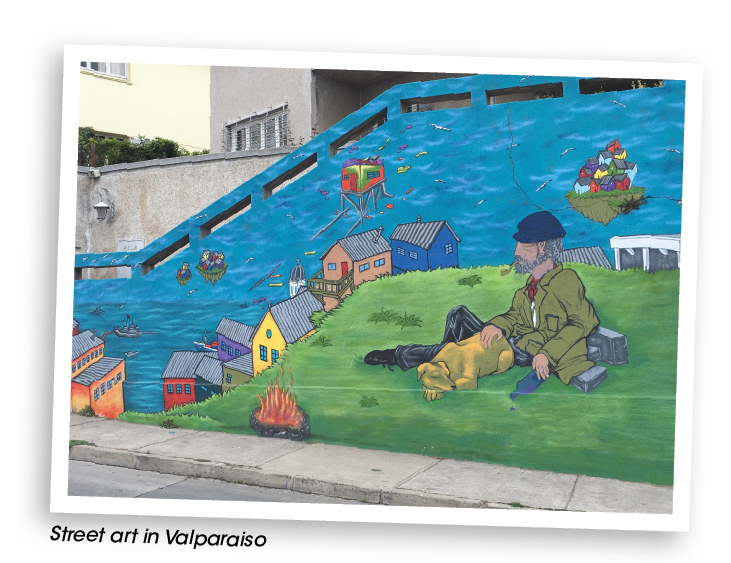 We began our stay in Valparaiso with a free walking tour. Tourists are asked only to tip their guides at the end of the day. Our guide, a 25-year-old history student, led us up the city's winding staircases, explaining why the houses hang precariously off the hillsides and street art covers nearly every wall.
We began our stay in Valparaiso with a free walking tour. Tourists are asked only to tip their guides at the end of the day. Our guide, a 25-year-old history student, led us up the city's winding staircases, explaining why the houses hang precariously off the hillsides and street art covers nearly every wall.
Founded in the 16th century, our guide explained, Valparaiso didn't reach its economic height until the second half of the 19th century, when Gold Rush prospectors used it as a pit stop on their way from Europe to California. The port area, the only flat section of the city, was developed by wealthy Europeans, who modeled their now-faded mansions and businesses after their native cities.
Local Chileans were forced to build their own homes into the hills. Residents painted the houses with leftovers from their ship-building jobs. The tradition of coating buildings in vibrant hues has continued to the present day.
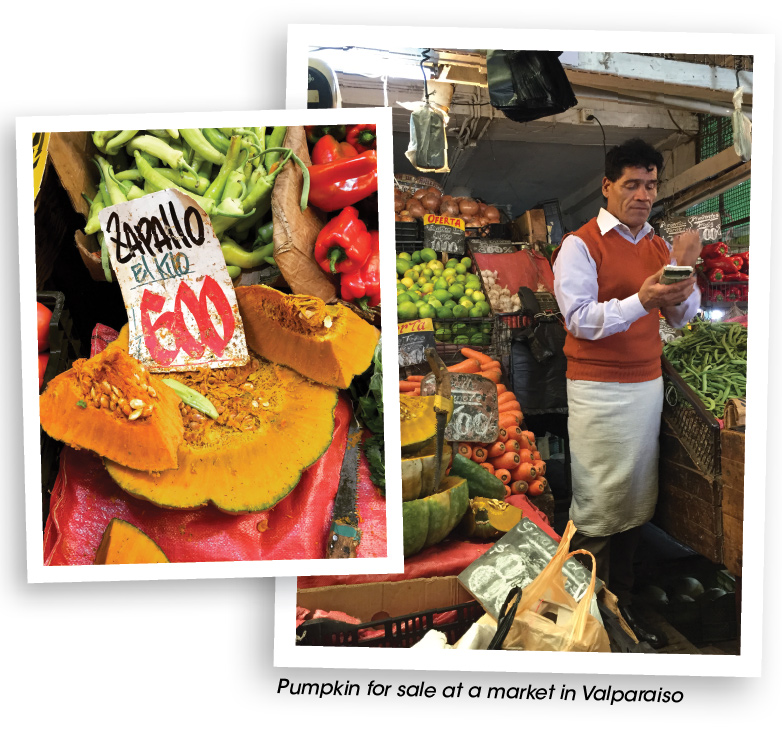 During Augusto Pinochet's cruel military dictatorship, which began in 1973, all forms of expression were closely regulated. When Pinochet left power in 1990, Valparaiso's artists celebrated their newfound freedom on the streets. Today, the colorful municipality invites people to paint public spaces while private houses and restaurants commission outdoor murals. With so much public art, much of it socially or politically inspired, the urban area is an enormous, ever-evolving, thought-provoking gallery.
During Augusto Pinochet's cruel military dictatorship, which began in 1973, all forms of expression were closely regulated. When Pinochet left power in 1990, Valparaiso's artists celebrated their newfound freedom on the streets. Today, the colorful municipality invites people to paint public spaces while private houses and restaurants commission outdoor murals. With so much public art, much of it socially or politically inspired, the urban area is an enormous, ever-evolving, thought-provoking gallery.
While exploring the city, we found fine fish restaurants and quirky clothing shops. One afternoon, we happened upon a local festival, where we played foosball on a 1950s table and our wee NASCAR driver maneuvered an antique toy car through the open plaza.
Another day, we wound our way through Mercado El Cardonal, the city's oldest continuously running food market, where bins of dog food sit beside bags of cooking herbs, reaffirming the value of a rudimentary knowledge of the local language.
Our final night with Nolan's parents, we raised glasses of pisco sour, Chile's national drink, and thanked them for coming all the way to South America. The following morning, we made it to the airport, where we checked in for the next segment of our global discovery: a 14-hour flight to Australia.
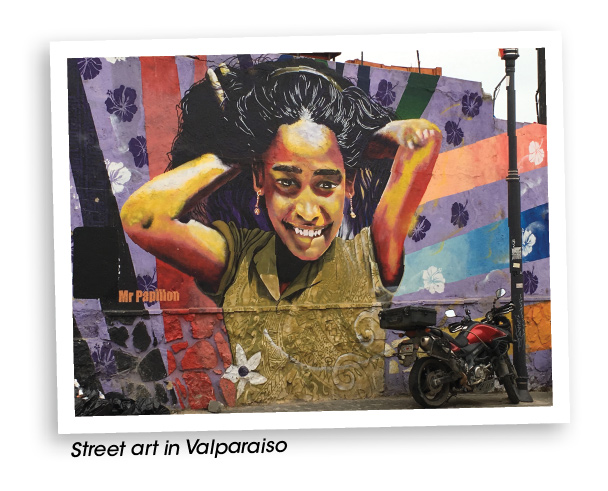
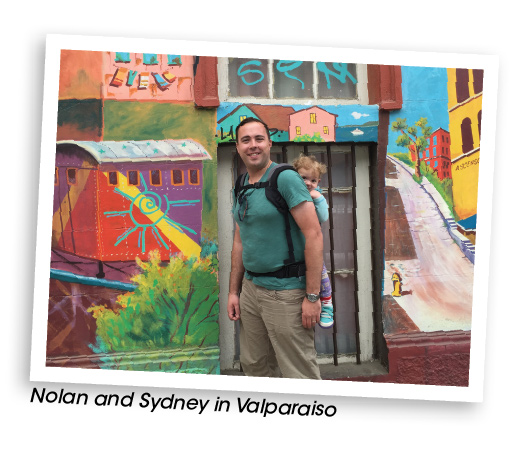
Coming next month to carolinawoman.com:
The trip continues in Australia and Indonesia.